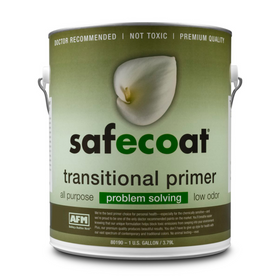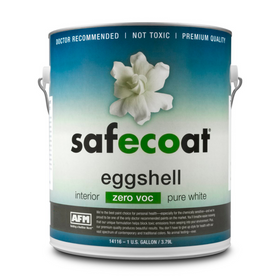
Natural Earthen and Mineral Plasters for Interior and Exterior Walls
Last Updated: Feb 13, 2025Major renovations on historic homes usually begin by gutting the interior to the studs to replace old plastered walls with more modern-looking drywall options. While drywall is relatively inexpensive and quick to install, it also comes with a high environmental cost. More than 20 billion square feet of drywall are manufactured every year in North America alone. As past hurricanes have shown (think Harvey and Katrina), drywall or plasterboard is extraordinarily fragile and susceptible to even the most minimal water damage. While the gypsum in drywall can be recycled, it often takes up an enormous amount of space in landfills worldwide. In fact, millions of tons of drywall are disposed of in landfills each year in the US alone.
Natural plasters offer a more durable, sustainable, and environmentally friendly option to plasterboard. With sustainable construction methods gaining popularity across the country, earthen and mineral plasters are also reviving what was once an indispensable part of home construction and offering healthier and more resilient interior and exterior finishes.
The Problems with Modern-Day Finishes
Drywall (along with plywood and 2x4s) is one of the staples of the billion-dollar construction industry. This industry is dependent on quick demolition and building practices. Older, more traditional building practices relied on natural plasters to cover and protect the interior and exterior walls. Natural plasters were applied over solid wood, brick, rock, and other materials to protect these walls and offer a more finished look.
Today, when most people consider redoing the interior or exterior finishes, opting for a new coat and color of paint is the most common choice. Unfortunately, most commercial paints come with several disadvantages for our health and the natural world. The volatile organic compounds (VOCs) in both water-based and oil-based paints can negatively affect your indoor air quality.
Moreover, interior and exterior cladding options drastically increase the number of natural materials required for home construction. For example, a cinder block home will often be "covered up" by brick, rock, or vinyl siding exteriors that are purely aesthetic in function. Reliance on these materials will clearly increase the embodied energy footprint of the home.
Table of Contents
- Advantages of Earthen and Mineral Plasters
- Eco Stucco
- LimeStrong Artisan
- American Clay
- Bottom Line
Advantages of Earthen and Mineral Plasters
Earthen and mineral plasters are natural alternatives to paint and other interior and exterior finishing or cladding types. These plaster options can be applied directly to the surfaces of the walls and offer several advantages.
Benefit #1: Local Materials
Earthen and mineral plasters consist of natural materials that can often be sourced near the building site. Earthen plasters are a mixture of local clays, sand, and fiber, such as straw. Mineral plasters often use lime as the base for the plaster option.
Benefit #2: Breathability
Natural plasters can also offer breathability for the walls of the home. Unlike chemical paints and solvents, which often worsen interior air quality, natural plaster options can improve your home's air quality. These options can also reduce mold and mildew issues. Mineral plasters, made from lime, can also absorb and release moisture, preventing condensation, the leading cause of fungi and mold. This feature also enables your home to maintain a comfortable humidity level more easily.
Benefit #3: Easier On The Environment
Natural plasters come with a very low carbon footprint, and they are entirely biodegradable. Earthen plasters can often be hand made from soil found on the building site. These materials will eventually be able to melt back into the ground once a home is demolished. In the specific case of mineral plasters, the lime can reabsorb the carbon dioxide released during the manufacturing process.
The cement industry releases 8 percent of all global carbon dioxide (CO2) emissions. In contrast, as lime plaster hardens on a home's walls, it can gradually turn back into limestone as it reabsorbs CO2 from the air. Also, lime is highly alkaline and naturally antibacterial, antifungal, and antiseptic.

Eco Stucco
Eco Stucco is a unique company that recognizes the benefits of constructing with low embodied energy materials for maximum carbon saving opportunities. Their complete line of mineral lime-plasters seeks to help reduce American homes' embodied energy footprint while not sacrificing aesthetic considerations. Their mineral plasters will naturally harden into calcium carbonate (limestone) for a durable, maintenance-free finish. The wide range of natural mineral pigments virtually eliminates the need to paint your home's interior or exterior. Their lime-based mineral plasters can be applied over almost any substrate. A 55-pound bag of their DecoLime product will be enough to cover a 100 square foot area of the wall. It currently costs about $140, though they have other less expensive ready-mixed natural plaster products for sale.

LimeStrong Artisan
Another company specializing in lime-based mineral plasters is LimeStrong Artisan. This US-based company makes its entire mineral plaster line from a base of water, lime, and pumice pozzolan. Both the lime and pumice are sourced in the United States, reducing their products' embodied energy footprint. These lime-based plasters set slowly, allowing for ease of application, as they don't contain any chemical setting agents. This company offers a wide array of mineral plaster products that all offer different textures, mattes, and finishes. The LimeStrong Stone plaster product offers a slightly polished finish and a medium to a fine texture. It costs $100 for a 32-pound bag and can cover up to 100 square feet. The LimeStrong Marble mineral plaster is the finest-graded plaster option offered by the company. This product is designed to be applied in successive thin coats. This type of application creates a luminous, polished finish. It costs $115 for a 30-pound bag and covers up to 300 square feet per bag.

American Clay
American Clay is a company that specializes in making and selling natural, earthen plaster products for interior finishes. Manufactured in New Mexico, this company's full range of earthen plasters produces absolutely zero VOCs. Their Forté line of natural plasters comes with a strong, natural binding agent for a more durable interior finish. The plaster's preparation requires mixing water and one of the company's natural pigments. One 50-pound bag can cover up to 180 square feet of wall space, and prices start at $110 per bag. Their Enjarre™ plaster product is a single-coat product. It reduces or even eliminates some of the effort and costs related to finishing a wall. This product can be applied in different ways to achieve a range of finishes, from semi-smooth to rustic or textured. A 63-pound bag costs $75 and can cover approximately 100 square feet.
Tobias Roberts
Tobias runs an agroecology farm and a natural building collective in the mountains of El Salvador. He specializes in earthen construction methods and uses permaculture design methods to integrate structures into the sustainability of the landscape.













